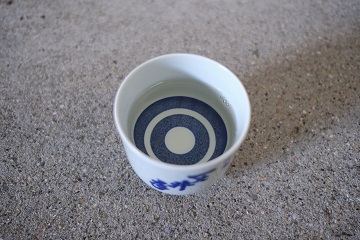IWC 2022 (May 12, 2022)
Established in 1984, the IWC (International Wine Challenge) is one of the most prestigious blind wine tasting competitions in the world.
In addition, our Daiginjo - Kurokui, made using Gin no Sato rice from Oita City, received the Commended Award.
We have Pressed our Tokubetsu Junmai Muroka Namagenshu - USUKI (February 20, 2022)
 |
 |
We have pressed our Tokubetsu Junmai muroka namagenshu - USUKI.
We used 100% Wakamizu rice, a rice known for producing fantastic sake, which is cultivated here in Usuki City.
Rice polishing rate: 55% and Kyokai No.9 yeast.
Alcohol content: 17.6%. Sake content: +4.3. Acidity: 1.8. Amino acid content: 1.5.
There is a slight banana-like aroma and I felt it was a little drier than usual, probably because the Wakamizu dissolved differently compared to previous years.
It is scheduled to go on sale around February 24th (Thursday). Please enjoy sake brewed in Usuki, the UNESCO designated City of Gastronomy.
We have Pressed our Daiginjo (February 13, 2022)
 |
 |
We have pressed the Daiginjo.
This was our first production using Gin no Sato sake rice, produced here in Oita prefecture, and it was a complete success.
The preparation will continue and very soon we will press our Tokubetsu Junmai Muroka Namagenshu - USUKI. So, you can start looking forward to its arrival !
Daiginjo Production has Begun (January 6, 2022)
 |
 |
There will be some new challenges with regards to the rice this term, but I know that our reliable manufacturing team will be able to overcome them.
Information Regarding the Sake Price Increase [from January 1, 2022] (December 1, 2021)
We thank you for your kind understanding and continued support.
Inspecting this Year’s Crop of Usuki’s Own Sake Rice - Wakamizu (October 28, 2021)
 |
 |
 |
 |
The serious task of inspecting this year’s crop of Wakamizu rice (used in our tokubetsu junmai - Ichinoide, and muroka namagenshu tokubetsu junmai - USUKI) was completed today by JA Oita Southern Division (Emuta, Usuki City).
Mr. Hirofumi Minato, the producer, watched on anxiously as his Wakamizu rice was appraised. Despite the long bout of rain, both before and after Bon Festival (a holiday in Japan that celebrates ancestors), the grade and the production volume were better than last year.
A Field of Wakamizu Rice, A Rice that is Fantastic for Sake Brewing, in Ieno, Usuki City (August 26, 2021)
 |
 |

An early-ripening variety of Wakamizu has already begun to bow and its ears have changed colour. Compared to the other varieties of rice growing in the fields, the shade of this variety is clearly different (third photo).
“I have cleared the blast, but the ears that could not be pollinated due to the long rain during Obon are white. It won’t have a big impact though,” said Mr. Hirofumi Minato, the Wakamizu producer and former classmate of Kuge Honten’s president.
We are looking forward to the day when this high-quality Wakamizu rice, grown in the wonderful environment of Usuki, will become delicious tokubetsu junmai sake.
The Oita Prefecture Shinshu Kikizake - New Sake Tasting Meeting (March 8, 2021)
きき酒会-360.jpg)
Our president attended the Oita Prefecture Shinshu Kikizake - New Sake Tasting Meeting as a judge. Judges mainly focused on evaluating the latest batch of daiginjo sake produced by each brewery.
There was a lot of namazake - a type of sake that is never heated - evaluated at the meeting. We decided to put forward a heated sake because, unlike namazake, this method helps to prevent the quality of sake deteriorating in the future.
Although it was evaluated a little harshly, we will exhibit it at the Kumamoto Regional Taxation Bureau - Liquor Appraisal Meeting with the hope that the sake will have matured by then.
Pressing Tokubetsu Junmai Muroka Namagenshu - USUKI (February 19, 2021)
We have pressed the Tokubetsu Junmai Muroka Namagenshu - USUKI.
This sake is full of love and brings to mind the faces of the team members involved in its production, and Mr. Minato, the farmer who produces the Wakamizu rice that is fantastic for brewing sake.
This year the sake level is +4.7 with an acidity of 1.7. Its flavour is rich and reminiscent of ginjo sake. It comes highly recommended.
Daiginjo Joso - Bag Hanging (February 15, 2021)
The daiginjo mash is hung in bags - this process is called joso.
We then collect the daiginjo that drips from the bags in special bottles called tobin.
Currently, we are experiencing closures due to the continuing coronavirus pandemic. However, today everyone is at work! Staff from sales, production and general affairs helped and joined in with the manual work with a good team spirit. We are very grateful to Mr. Ogami of Ogami Beppu who also passionately contributed.



 日本語
日本語 
